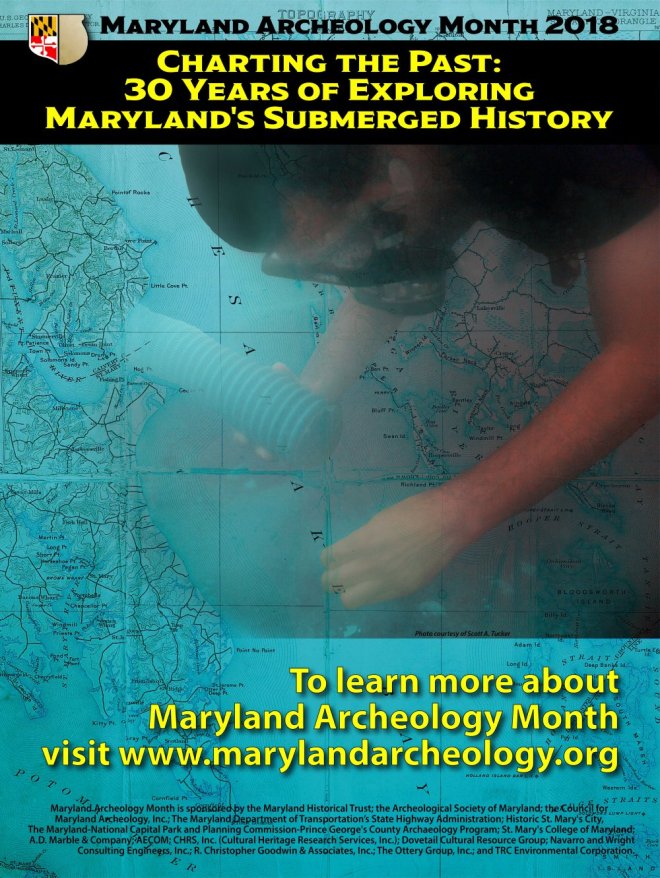By Patricia Samford, Director, Maryland Archaeological Conservation Laboratory
It somehow seems appropriate that the acquisition by the State of Maryland of many of Baltimore’s most important artifact collections would occur during April — Maryland’s Archaeology Month. These collections, which were generated through the work of the Baltimore Center for Urban Archaeology, will be curated by the Maryland Archaeological Conservation Laboratory (MAC Lab) at Jefferson Patterson Park and Museum.

A privy filled in the early 19th century at the Clagett’s Brewery site (18BC38) yielded 432 ceramic and glass vessels, including this unusual scratch blue pearlware chamberpot bearing the initials of England’s King George.
The formation of the Baltimore Center for Urban Archaeology in April of 1983 was arguably the single most influential action affecting archaeology in the city. Baltimore mayor William Donald Schaefer, impressed by the Archaeology in Annapolis project, decided that a similar program was needed to promote heritage tourism in Baltimore. Mayor Schaefer envisioned excavations as a way, through the media and public visitation, of promoting Fallswalk, a new historic walking trail along Jones Falls. In establishing the Center, Schaefer instituted the first public archaeology program ever funded by a major U. S. city.
Over the next fifteen years, the Baltimore Center for Urban Archaeology conducted historical research on 53 city properties, resulting in 21 excavations. Some of the most important projects included the Clagett Brewery (18BC38)—one of Baltimore’s earliest breweries—along Jones Falls, and Cheapside Wharf (18BC55), where the Inner Harbor is located today. The center’s work generated around 500 boxes of artifacts—collections that have revealed important evidence about the city’s past and its important role as a port city.

Members of an Archaeological Conservancy tour admire artifacts from the privy at Clagett’s Brewery
Elizabeth A. Comer directed the BCUA from its inception in 1983 until 1988, when she left to work in tourism in the Schaefer administration. Upon her departure the direction of the BCUA was shared by Kristen Stevens Peters and Louise Akerson. Louise, who had been the BCUA’s Lab Director since 1983, assumed overall direction of the BCUA when Kristin left in 1990, and continued in that role until her retirement in 1996. Esther Doyle Read was the final director of the BCUA until it was dissolved, along with the City Life Museums, in 1997. The collections generated through the center’s work were acquired by the Maryland Historical Society. For the next twenty years, the collections and the records associated with the excavations were unavailable to researchers and students. Negotiations between the State of Maryland, the City of Baltimore and the Maryland Historical Society resulted in the collections being turned over to the state in April of 2018.
The MAC Lab has already begun to make the collections available to the public. A sample of artifacts from the Clagett Brewery Site was on display during Jefferson Patterson Park and Museum’s Discovering Archaeology Day event on April 21st and they were also popular with the Archaeological Conservancy tour of the lab. Over the next several months, artifacts from the collections will begin to be added to the Diagnostic Artifacts in Maryland website and also to Maryland Unearthed, a website that allows the public and researchers to learn more about the collections at the lab. For more information about this collection or the work of the Maryland Archaeological Conservation Laboratory, please contact patricia.samford@maryland.gov.
Author’s note: This is a slighly updated version of the original article with a few factual errors corrected.



